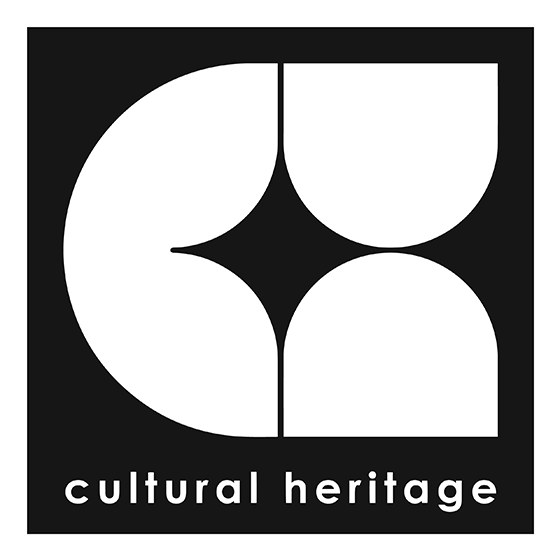
Heritage of architecture of the second half of the twentieth century – valorization and limits of transformation
The second half of the twentieth century exists between history and the present. This state of peculiar suspension causes that we do not always know how to study, evaluate and protect it. Therefore, often valuable and experimental objects or urban layouts of the Modernist period deteriorate, are transformed or demolished and replaced by new buildings. This perceptible problem results in both irreversible loss of heritage and negates the principles of cultural continuity. The problem occurs both on a national, European and global scale, so cooperation and international exchange of experience is an excellent starting point for finding solutions.
In April 2025 we held the first international conference at the Faculty of Architecture of the Silesian University of Technology on the Heritage of Architecture of the second half of the 20th century. At that time we talked about the problems of its preservation in the face of contemporary challenges and about good practices. Contributions from participants from Italy, Portugal, Germany, Turkey, Lithuania and Poland gave our discussion a European dimension, confirming once again that heritage protection is a common problem.
At the forthcoming conference, to be held in April 2026, we would like to consider the problem of valorization in the sense of assessing the value of heritage. Value assessment is the starting point for any conservation or adaptation effort, because it provides answers to three basic questions:
- What should we absolutely preserve and why?
- How much can we transform?
- What can we possibly demolish?
These are therefore questions of value that provide the framework for our conservation and design decisions.
Examples of demolition, remodeling of buildings, over-densification of settlements, redevelopment of parts of cities and neighborhoods opposed to their original compositional assumptions — we encounter as an everyday experience. Thus, the features of spaces and places that indicate their initial origins are disappearing, and with them the values of authenticity and integrity. Of course, this process applies not only to Modernist sites, but in their particular case we have the fewest tools to successfully stop it.
In the course of the discussion, therefore, we want to share experiences and explore answers to these and similar questions:
- How to assess the value of the heritage of architecture and urbanism of the second half of the 20th century?
- Is it possible to create a hierarchy of criteria for assessing value and how to apply them to individual buildings and urban layouts?
- How to assess the tangible and intangible values of the heritage of architecture and urbanism of the second half of the 20th century?
- Are the categories of authenticity and integrity still applicable and how to interpret them nowadays?
- Are there limits to acceptable transformations of architecture and urban layouts?
- Is it possible to formulate general conservation strategies based on values?
We encourage you to share your knowledge and experiences.
We hope that the joint discussion will broaden our understanding of the problems of the heritage of architecture of the second half of the 20th century and contribute to efforts for its preservation.
Dziedzictwo architektury drugiej połowy XX wieku – waloryzacja i granice przekształceń
Architektura drugiej połowy XX wieku istnieje pomiędzy historią a teraźniejszością. Stan swoistego zawieszenia sprawia, że nie zawsze wiemy, jak ją badać, oceniać i chronić. Dlatego też często wartościowe i eksperymentalne obiekty czy założenia urbanistyczne okresu modernizmu niszczeją, są przekształcane lub wyburzane i zastępowane nową zabudową. Ten dostrzegalny problem skutkuje zarówno bezpowrotną utratą dziedzictwa, jak i przeczy zasadom ciągłości kulturowej. Problem występuje zarówno w skali krajowej, europejskiej, jak i globalnej, dlatego współpraca i międzynarodowa wymiana doświadczeń jest znakomitym punktem wyjścia dla poszukiwania rozwiązań.
W kwietniu 2025 odbyła się pierwsza międzynarodowa konferencja na Wydziale Architektury Politechniki Śląskiej poświęcona Dziedzictwu architektury 2 połowy XX wieku. Rozmawialiśmy wówczas o problemach związanych z jego ochroną w obliczu wyzwań współczesności oraz o dobrych praktykach. Głosy uczestników z Włoch, Portugalii, Niemiec, Turcji, Litwy i Polski nadały naszej dyskusji europejski wymiar potwierdzając zarazem po raz kolejny, iż ochrona dziedzictwa jest problem powszechnym.
Podczas kolejnej konferencji, która odbędzie się w kwietniu 2026, będziemy chcieli zastanowić się nad problemem waloryzacji, czyli oceny wartości dziedzictwa. Ocena wartości jest punktem wyjścia do wszelkich działań konserwatorskich czy adaptacyjnych, ponieważ dostarcza odpowiedzi na trzy podstawowe pytania:
- Co i dlaczego powinniśmy bezwzględnie zachować?
- Co możemy przekształcić i w jakim zakresie?
- Co ewentualnie możemy wyburzyć?
Są to pytania o wartości, którymi kierujemy podejmując decyzje konserwatorskie i projektowe. Przykłady wyburzania, przebudowy budynków, dogęszczania osiedli, zabudowywania fragmentów miast i dzielnic wbrew ich pierwotnym założeniom kompozycyjnym – spotykamy na codzień. Zanikają zatem cechy przestrzeni i miejsc świadczące o ich oryginalnym rodowodzie, a wraz z nimi wartości autentyczności i integralności. Oczywiście, proces ten dotyczy nie tylko założeń modernistycznych, ale w ich właśnie przypadku mamy najmniej narzędzi, aby go skutecznie pohamować.
W toku dyskusji chcemy zatem podzielić się doświadczeniami i poszukać odpowiedzi na te i podobne pytania:
- Jak ocenić wartość dziedzictwa architektury i urbanistyki drugiej połowy XX wieku?
- Czy możliwe jest skonstruowanie hierarchii kryteriów oceny wartości i jak odnieść je do poszczególnych obiektów i założeń urbanistycznych?
- Jak oceniać wartości materialne i niematerialne dziedzictwa architektury i urbanistyki modernizmu 2 pół XX wieku?
- Czy kategorie autentyzmu i integralności są nadal istotne i jak je interpretować?
- Czy istnieją granice dopuszczalnych przekształceń?
- Czy możliwe jest sformułowanie ogólnych strategii ochrony?
Zachęcamy Państwa do podzielenia się wiedzą i doświadczeniami.
Mamy nadzieję, iż wspólna dyskusja rozszerzy nasze rozumienie problemów dziedzictwa architektury 2 połowy XX wieku i przyczyni się do działań na rzecz jej ochrony.